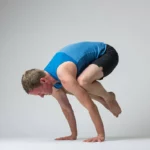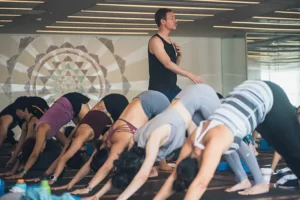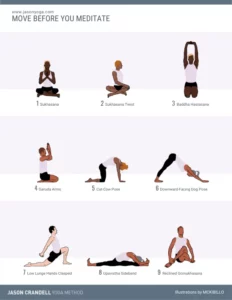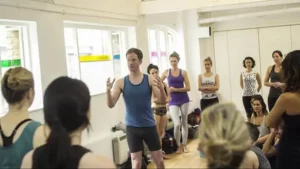Why this Camel Pose Yoga Sequence Works
Students who love Ustrasana, Camel Pose, praise the pose for the way it opens the shoulders, chest and upper-back. And, they’re right. Camel Pose is hard to beat when it comes to extending the thoracic spine.
Students who loathe Ustrasana invariably complain about discomfort in the neck and lower back. They’re also right. It can be tough to do Ustrasana without creating excessive compression in your lower back and neck.
As teachers, we know two things about how our students experience Ustrasana. Some students love the pose because it’s working for them; and, some students don’t love the pose because it’s not working for them. For me, this becomes a puzzle to solve when I’m sequencing a class. My goals are clear: I want to create a sequence that helps students maximize the benefits of Ustrasana (Camel Pose) while minimizing the challenges of the posture.
Maximize the Benefits of Camel Pose in Yoga
To do this, the sequence below emphasizes a flow of postures that methodologically prepares your entire front body for Ustrasana. When the front body—especially the hip flexors, quadriceps, abdominals, pectorals and anterior deltoids—are adequately prepared, it’s more likely that your students will be able to open their shoulders and chest without crunching their lower back and neck.
Here’s a really quick break down of my favorite mini-practice for Ustrasana (Camel Pose).
See also Yoga for Back Pain
A Smart Sequence to Camel Pose
POSES 1-3
The first 3 postures allow you to settle into your body. Mild twisting is a nice preparation for yoga backbends. The following posture flow is going to focus almost exclusively on lengthening the front body in preparation for backbends, so it’s nice to the sequence with a little complementary work.
POSES 4-6
I really love this combination of poses and I use it in a lot of my sequences. It’s definitely a staple in my own practice. In each of these postures your shoulder is in extension and one hip is in extension. This simultaneously lengthens the front of your shoulders, chest, hip-flexors and quads. The top arm is in the same chest-opening position as Ustrasana. These postures also introduce mild spinal extension. This mild backbending segues perfectly into the next combination of postures.
POSES 7-12
This is a straightforward progression of backbends that goes from less demanding to more demanding. One of the reasons that I chose these postures is that they all extend the shoulder joint, except for Cobra Pose. This shoulder extension will help open the front of the shoulders and chest in preparation for Ustrasana.
POSE 13
Lucky number 13—Ustrasana! This is still a tough posture for most students, but here are 3 quick tips for working with the posture. 1) Engage the bottom of your Gluteus Maximus. Yes, engage them. 2) Externally rotate your arms so that your biceps and elbow creases are turning away from each other. This will help lift your chest in the pose. 3) If the pose is still uncomfortable in your neck, tuck your chin and look toward your chest. If the pose is uncomfortable in your lower back, place your hands on the back of your pelvis. Use your thumbs to lengthen the back of your pelvis downward. Take your time and do what you need to do in order to befriend the pose.
POSES 14-15
The word “perfect” is nauseatingly overused. But, I’m going to add to the problem and write that Supta Padangusthasana is the “perfect” follow-up to Ustrasana and other backbends. Unlike Happy Baby Pose, which flexes the spine, Supta Padangusthasana allows you to maintain the natural curves of the spine. This is a mild transition for your back after all the extension you created in your backbends. It also allows you a few moments to feel (and possibly savor) the afterglow of your backbends. Viparita Karani is your just desserts.
AND, if you want to feel more confident and knowledgeable about your sequencing skills, check out my online course, The Art of Yoga Sequencing. It’s great for yoga teachers and students who want to better understand how the body works and how to stretch and strengthen effectively.
{illustration by MCKIBILLO}
Want more sequences by Jason?
Sign up to join our newsletter and we’ll send you our e-book:
30 Essential Home Practice Sequences.






